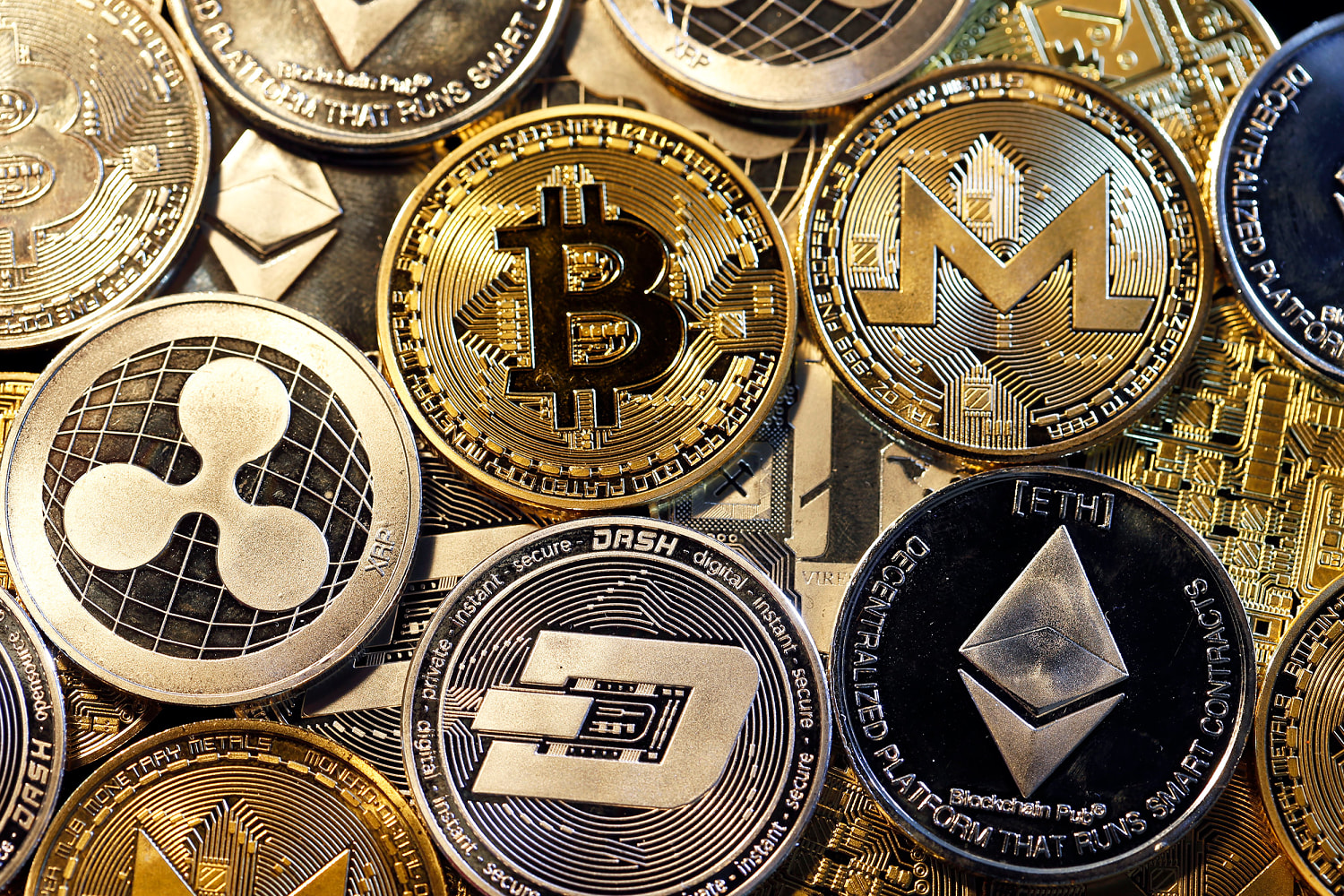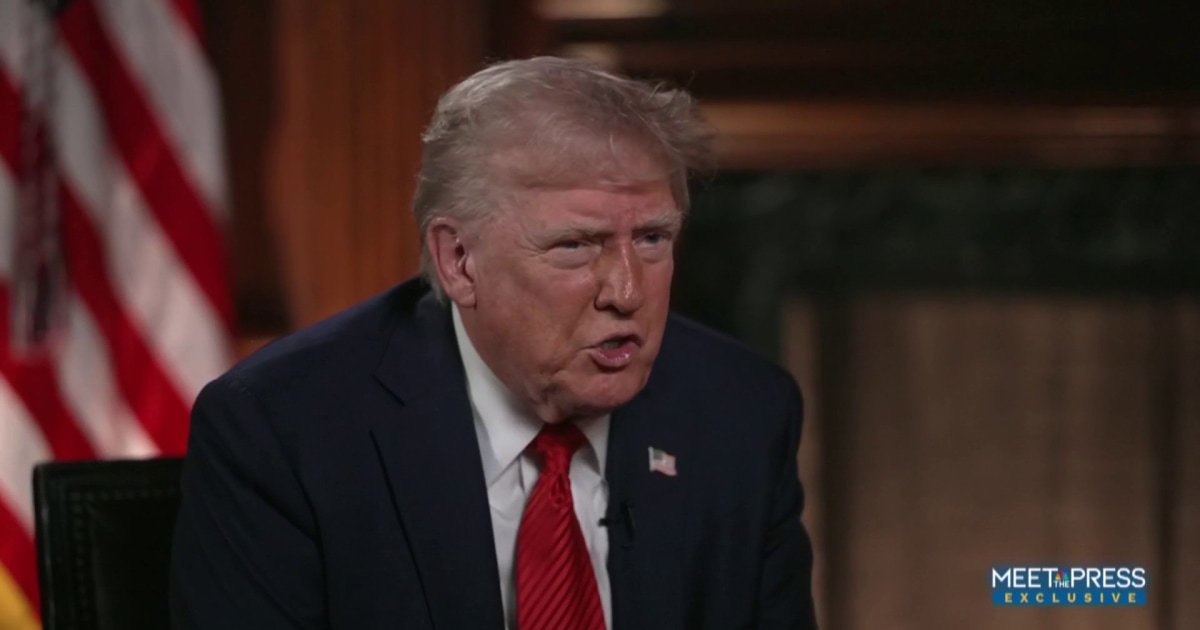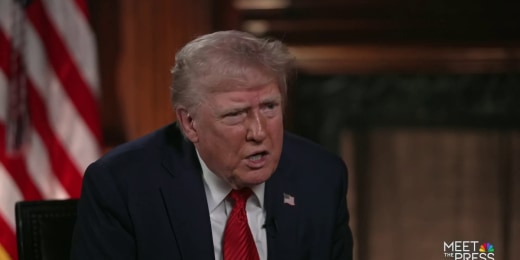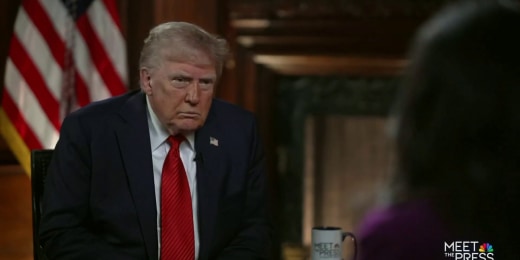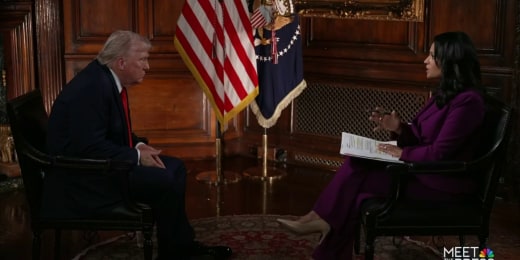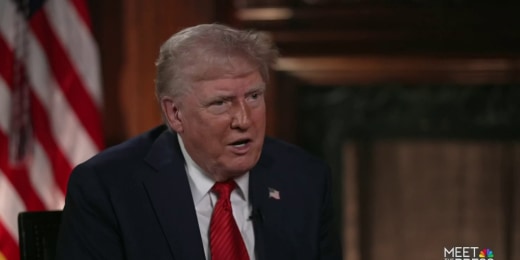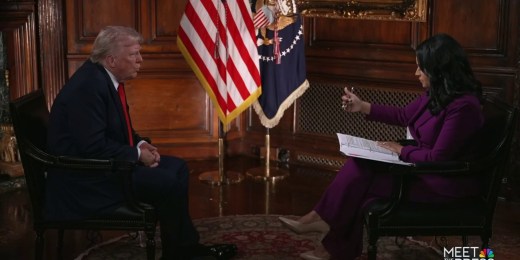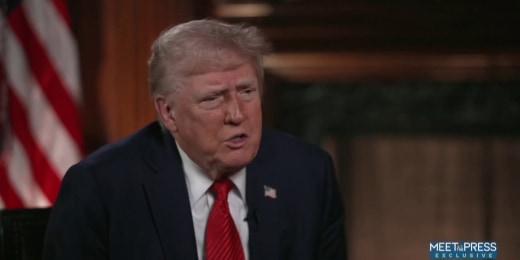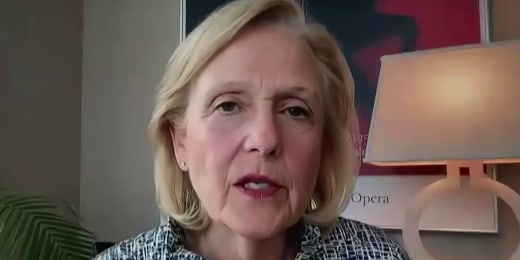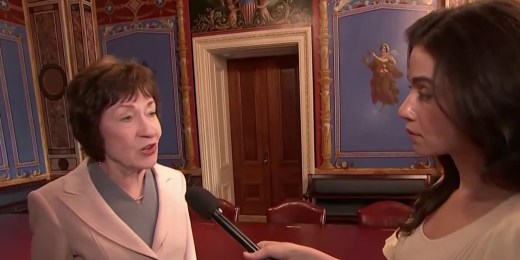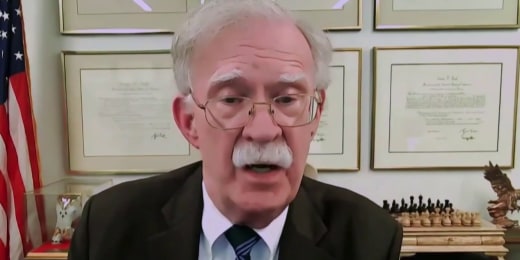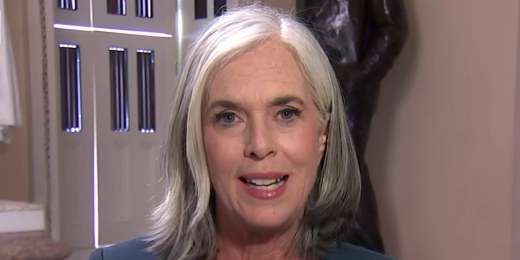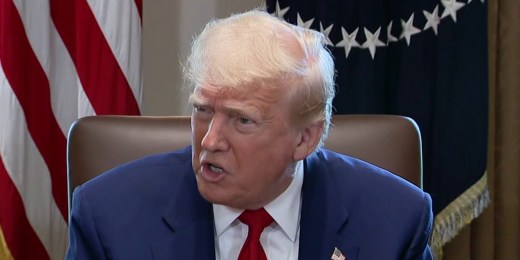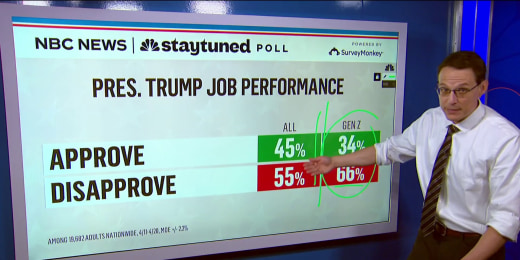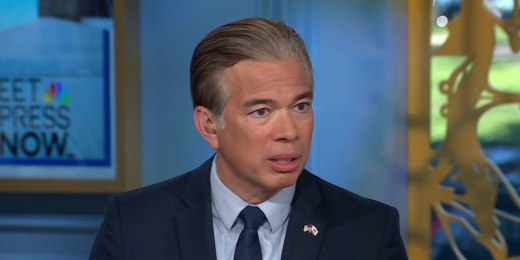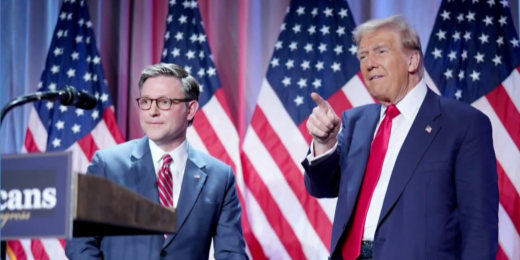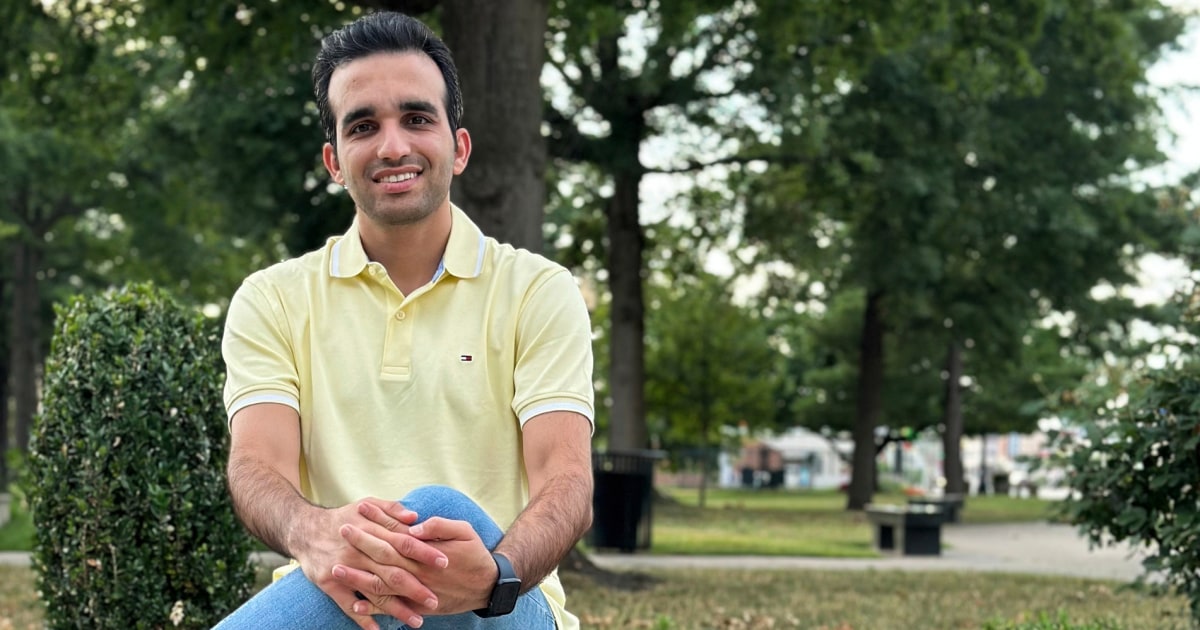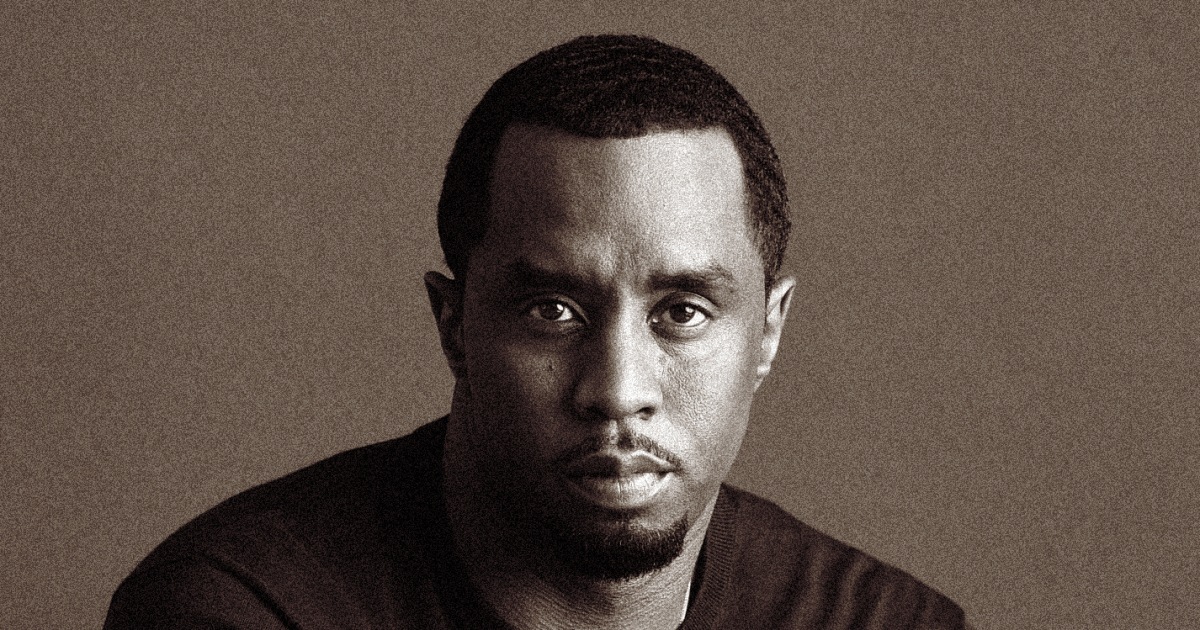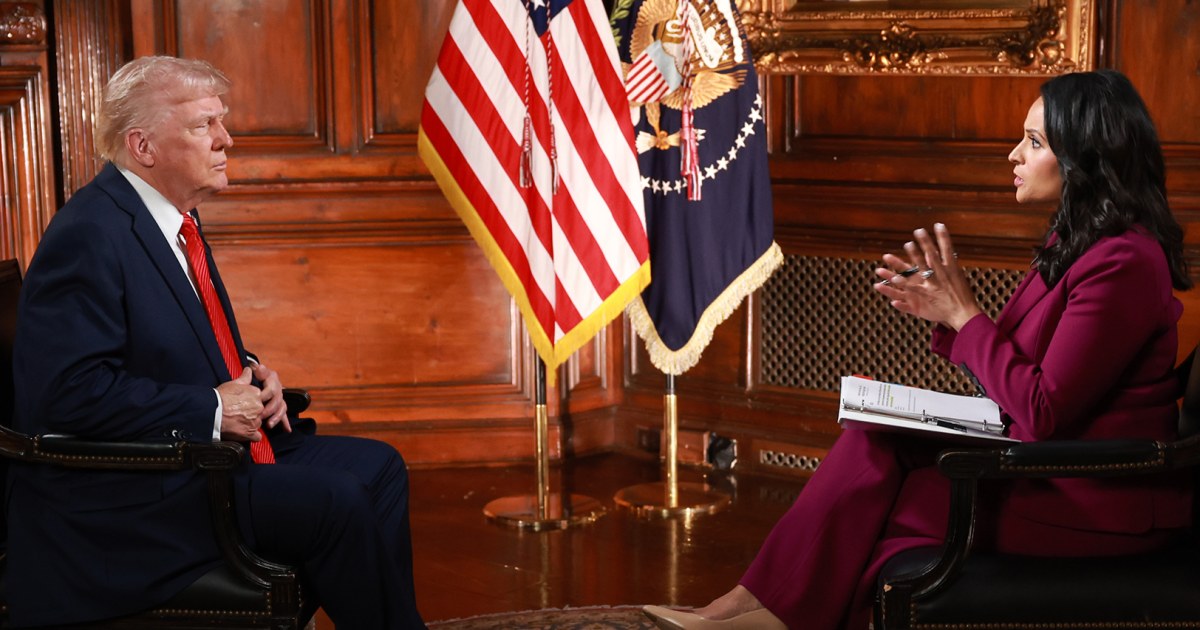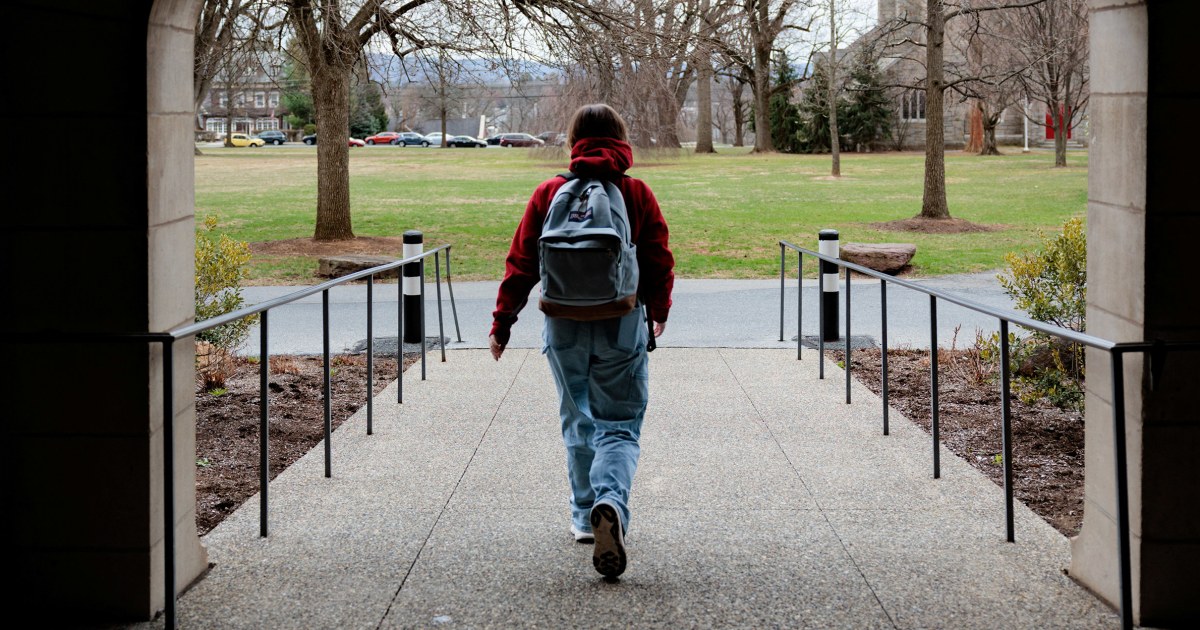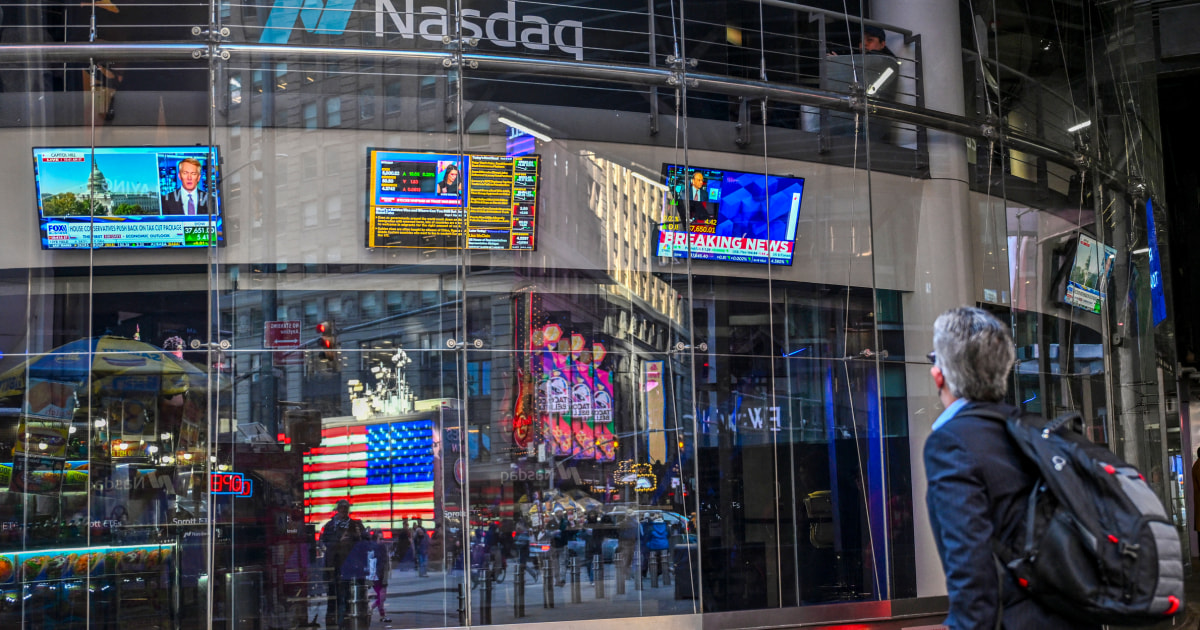President Donald Trump played down the fears of his critics — from the potential harms of a recession to worries about rising prices due to his tariffs to the possibility that he would seek a constitutionally forbidden third term — in a wide-ranging interview with NBC News’ “Meet the Press” moderator Kristen Welker at his Mar-a-Lago home in Palm Beach, Florida.
The hour-plus back-and-forth, which aired Sunday, covered the waterfront of his first 100 days in office and what he expects to accomplish in the coming years on the economy, foreign policy, immigration and social policy. He also reflected on his Make America Great America movement, which helped return him to the White House after his 2020 defeat, and expressed confidence that it would remain intact beyond his term.
With his approval numbers sliding modestly amid a flurry of executive actions — which have tested the constitutional limits of presidential power over the size and scope of the government, the due process rights of noncitizens and the punishment of political opponents — Trump waved away concerns about rising prices on some goods in the wake of his expansive program of tariffs.
More from the Trump interview
Asked about small businesses concerned about pain from the tariffs on Chinese goods, Trump said “many businesses are being helped” and that there was no need for the relief some small businesses are seeking. “They’re not going to need it. They’re going to make so much money,” he said.
He suggested that Americans ought to be able to make do with fewer common goods, like dolls or pencils. Asked about rising prices on items like tires or strollers, Trump pivoted to gasoline, saying that was “thousands of times more important.”
And overall, he answered questions about current economic uncertainty by blaming his predecessor and promising a stronger future after some “transition” bumps.
Yet Trump appeared eager to offer words of reassurance to Americans who worry he is dismantling democratic protections against authoritarianism and angling to stay in the presidency indefinitely.
“So many people want me to do it,” Trump said of seeking a third term despite the 22nd Amendment’s limit of two full terms. But, he added, “it’s something that, to the best of my knowledge, you’re not allowed to do. I don’t know if that’s constitutional … But this is not something I’m looking to do.”
Trump declined to name a single heir to his MAGA movement, mentioning Vice President JD Vance and Secretary of State Marco Rubio as potential successors, but he predicted that it will continue when he is no longer president. And he said Vance could have the inside track.
“There’s a lot of them that are great. I also see tremendous unity. But certainly you would say that somebody’s the VP, if that person is outstanding, I guess that person would have an advantage,” Trump said.
As Trump looks forward to a future that he believes will be strong for Republicans, he has used his power to target universities, law firms and other institutions that have been critical of him or opposed his policies. Asked by Welker whether he believes dissent is an “essential part of democracy,” Trump replied that it is “a part of democracy.”
Despite signing executive orders instructing his Justice Department to investigate adversaries, Trump told Welker that he is not pressuring his appointees to do that and that he “absolutely” believes people should be able to criticize him without fearing reprisal.
“Yeah, I do,” he said.
Managing the economy
In the opening months of his presidency, Trump has made significant progress already on one of the twin pillars of his campaign platform: curbing illegal immigration. On his first day in office, he declared a national emergency to increase his powers to secure the U.S. border with Mexico. While federal courts have intervened to slow down his mass-deportation efforts — citing the Constitution’s guarantee of due process — the number of people crossing the U.S. border without visas has plummeted, according to government data.
“The border now is not the emergency,” he told Welker when she asked whether he would lift that determination. “The border is — it’s all part of the same thing though. The big emergency right now is that we have thousands of people that we want to take out, and we have some judges that want everybody to go to court.”
He added that he has no plans to end the emergency declaration.
“No, no, no,” he said. “We have an emergency. We have a massive emergency overall.”
The other main vow of his campaign — to end inflation and turbo-boost the American economy — has proved more elusive.
Inflation rates have subsided some during Trump’s presidency, falling from 3% year over year to 2.4%. But Trump’s claims about price reductions do not match up with the reality of persistent inflation. In the interview, he repeated a false assertion that gas has dropped to less than $2 per gallon in some states, which does not reflect the prices consumers are paying at the pump.
In a troubling sign, the U.S. economy shrank in the first quarter of 2025 at an annualized rate of three-tenths of a percentage point, marking the first negative growth since the first quarter of 2022. Much of that was driven by a surge in imports, which count against gross domestic product, as businesses raced to bring in goods before Trump’s tariffs took effect.
Though he campaigned on providing immediate economic relief to consumers, Trump has described recent pain as part of a “transition” period. He argues that the tariffs will ultimately lower the U.S. trade deficit, result in revenue for the government and improve the domestic economy.
“We don’t have to waste money on a trade deficit with China for things we don’t need, for junk that we don’t need,” Trump said.
Critics say the tariffs will increase the costs of staples and desired luxury items, with high prices passed on to consumers, and slow down the economy at a time when it may be headed into a recession.
Trump told Welker that the U.S. would be “OK” in the event of a short-term recession on the way to what he predicts, long term, will be a rollicking economy when his policies take full effect.
“Look, yeah. Everything’s OK,” he said, adding: “I said, this is a transition period. I think we’re going to do fantastically.”
Welker pressed him on whether he is worried the economy could keep shrinking.
“No,” he said. “Anything can happen. But I think we’re going to have the greatest economy in the history of our country.”
At the same time, Trump laid more groundwork for the idea that Americans are willing to suffer a certain amount of short-term austerity in service of his economic agenda.
He acknowledged that prices on some goods “might” go up but argued that falling energy prices will matter more to consumers.
“Gasoline is thousands of times more important than a stroller” or something else, he said, adding: “You don’t need to have, as I said, 35 dolls.”
Instead, he said a child should have “two, three, four, and save a lot of money,” asserting that, with regard to products made costlier by his tariffs, “We don’t need to feed the beast.”
Trump said he was not trying to prepare Americans to see empty shelves in stores.
“I’m not saying that. I’m just saying they don’t need to have 30 dolls. They can have three. They don’t need to have 250 pencils. They can have five,” he said.
Foreign affairs
The economy, meanwhile, is playing out against the backdrop of Trump’s efforts to apply his “America first” principles to areas of global tension. He has yet to land a peace deal between Russia and Ukraine — which he said would happen simply as a result of his election — but has signed a minerals pact with Ukraine that invests the U.S. in that nation’s future.
In 2017, Trump walked away from President Barack Obama’s nuclear pact with Iran, but he is now trying to negotiate a new agreement. He told Welker that his goal in discussions about a deal with Iran is “total dismantlement” of that nation’s nuclear program. And yet, he said he is willing to listen to arguments for allowing Iran to pursue civilian nuclear energy while ending its nuclear weapons program.
“I think that I would be open to hearing it, you know?” Trump said. “Civilian energy, it’s called. But you know, civilian energy often leads to military wars. And we don’t want to have them have a nuclear weapon. It’s a very simple deal.”
He also reiterated that he would not “rule out” using military force in his pursuit of adding Greenland to the U.S. But he appeared to stand down a little with regard to Canada, which he said he would still like to annex as the “51st state.”
“I don’t see it with Canada,” he said of the use of force to make that happen. But he also said: “They think we are going to protect them, and really we are. But the truth is, they don’t carry their full share, and it’s unfair to the United States and our taxpayers.”
On the question of Russia and Ukraine, Trump admitted that peace between the countries, which he had once vowed to deliver quickly, may not be achievable, though he also said he thinks a deal may be “fairly close.”
“Maybe it’s not possible to do,” Trump said. “There’s tremendous hatred, just so you understand, Kristen. We’re talking tremendous hatred between these two men and between, you know, some of the soldiers, frankly. Between the generals. They’ve been fighting hard for three years. I think we have a very good chance of doing it.”
The legislative agenda
Amid Trump’s foreign policy agenda, his tariff plan and other unilateral economic moves, the president has a broader economic agenda that will require Congress to enact a budget “reconciliation” measure, which is slated to extend his 2017 tax cuts and trim some domestic spending while increasing annual deficits and adding trillions of dollars to the national debt.
Under budget rules, that bill, which is still under construction on Capitol Hill, is not subject to a filibuster by minority Democrats in the Senate and can therefore be passed with only Republican votes. Trump still has to hammer out the details in a way that can win the support of the narrow GOP majorities in the House and Senate.
“We’re talking about the great, big, beautiful bill that we’re trying to get passed,” Trump said, adding, “I think the Republicans are going to vote for it. And it’ll be the most consequential bill, I think, in the history of our country.”
Trump said he believes lawmakers can reach the July 4 deadline that Senate Majority Leader John Thune, R-S.D., has set and that he would veto the bill if it includes cuts to Medicaid.
“I would if they were cutting it, but they’re not cutting it,” he said, suggesting that plans to reduce Medicaid spending will not affect beneficiaries — and therefore don’t count as cuts. “They’re looking at fraud, waste and abuse. And nobody minds that. … But we’re not cutting Medicaid, we’re not cutting Medicare, and we’re not cutting Social Security.”
The budget resolution passed by both chambers calls for $880 billion in cuts from programs overseen by the House Energy and Commerce Committee, a figure that most analysts say cannot be reached without reducing spending on Medicaid.
The fate of TikTok
Trump said he will not take the popular video application TikTok away from Americans, even with another deadline coming up for ByteDance, the company’s Chinese owner, to sell it.
Despite a law forcing the shutdown of the app in the U.S. if its Chinese-based owner does not sell to a U.S.-based company, Trump has issued executive orders delaying the ban. Trump approved a second 75-day extension for a deal earlier this month and said he would consider another one if necessary.
“I’d like to see it done,” he said of a deal for TikTok’s sale, later adding, “Perhaps I shouldn’t say this, but I have a little warm spot in my heart for TikTok. TikTok is — it’s very interesting, but it’ll be protected. It’ll be very strongly protected. But if it needs an extension, I would be willing to give it an extension. Might not need it.”
The overall political impact
Trump predicted that his policies will prove popular enough to contravene the trend of the president’s party losing at least one chamber of Congress in the first midterm election of their tenure.
“I don’t know why it would be. I think we should do better,” he said, noting that he is raising money for congressional Republican campaigns. “But if you look, it’s pretty consistent that whoever wins the presidency ends up losing the House, losing the Senate. I think we’re going to turn that around. I think we’re going to turn it around easy. It should be the opposite. If we do a good job, let’s say as president if I do a good job, it should be the opposite.”
